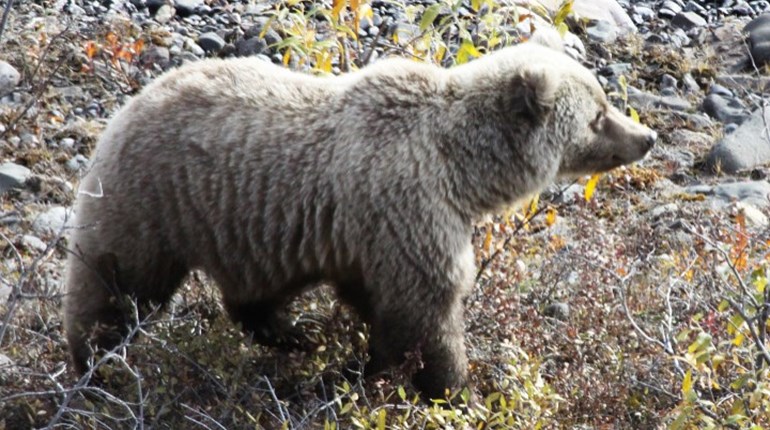
If you’ve never before been to Rocky Mountain National Park, make your first visit in autumn for three reasons: beautiful weather, gorgeous fall foliage and the annual elk rut—all are spectacular. There are so many elk—also called wapiti by Native Americans—that the herds often create traffic tie-ups known locally as “elk jams.” Elk even spill over into the nearby town of Estes Park, Colorado, where the animals can be viewed not only crossing roads but also in residents’ yards, casually munching on shrubbery.
“In the fall, elk descend from higher elevations to montane meadows to begin their annual breeding season,” said Kyle Patterson, public information officer at the park. “Within the herds the larger males move among the females, competing with one another for the right to breed. While competition is high among bulls there is usually little fighting, as fighting causes injury and also depletes energy. Instead, mature bulls compete by displaying their antlers and posturing their large bodies. They also emit strong, musky odors and bugle. An elk’s bugle is amazing to hear. It’s a crescendo of deep, resonant tones that rise rapidly to a high-pitched sound before dropping to a series of grunts.”
Of a bull elk’s haunting, high-pitched bugle, Theodore Roosevelt—conservationist, hunter, and 26th President of the United States—once said, “It was almost impossible to believe that it is the call of an animal.” The frenzied rut lasts from mid-September to mid-October, and the thousand-pound bulls may lose up to one-fourth of their body weight during that period.
But Rocky Mountain National Park is much more than simply a premier elk-viewing venue. Located in north-central Colorado, about a two-hour drive northwest of Denver, the park encompasses and protects some 415 square miles of high-country habitats and spectacular mountain scenery. Not surprisingly, both day-hiking and overnight backpacking are popular, with some 350 miles of trails leading to wildlife, wildflowers and a myriad of other natural wonders.
Don't miss the drive along Trail Ridge Road (U.S. 34), the main scenic highway through the park. Having taken six years to construct during the early 20th Century, the road crests at 12,183 feet, with many pullouts along the way overlooking alpine and subalpine environments.
During the road’s construction, Horace Albright, then director of the National Park Service, predicted in 1931 that once the road was completed, “You will have the whole sweep of the Rockies before you in all directions.” In hindsight, Albright’s statement was not hyperbole.
Stretching nearly 50 miles between Estes Park on the park’s east side and Grand Lake on the west, 11 miles of Trail Ridge Road are above the treeline. In that fragile alpine world, conditions resemble those found in the Canadian or Alaskan arctic—nearly always windy and 20 to 30 degrees cooler than in the park’s valleys. But the vistas are unparalled, sweeping north to Wyoming, east across the Front Range cities and Great Plains, and south and west into the heart of the Rockies. Another highlight of the drive is crossing the Continental Divide at Milner Pass, elevation 10,120 feet.
Wildlife in this tundra habitat includes pikas, marmots, ptarmigans and bighorn sheep. About 200 species of tiny alpine plants cling to the ground here, despite an annual growing season that may last just 40 days.
Allow half a day for the Trail Ridge Road drive, if not longer. And keep in mind that the higher elevations of the road are closed from Mid-October to Memorial Day, due to large amounts of snowfall and unpredictable weather.
An annual celebration known as Elk Fest is held in Estes Park, Colorado (just outside Rocky Mountain National Park), during the first weekend in October: this year October 1 and 2. Part of the fun is an elk-calling contest, where kids and adults compete for both prizes and bragging rights. One of the more interesting categories is for participants using nothing more than their mouths...no callers.
Two fee-free park entrance days remain for this year: September 24 and November 11. Just keep in mind that fee-free days are some of the most popular—meaning busy—on the park’s annual calendar. Kyle Patterson has a tip for avoiding some of the crowds.
“The elk are most active at both dawn and dusk, but the larger crowds of visitors gather just before dusk, during late afternoon,” she said. “So by visiting first thing in the morning you can beat some of the rush. And know that last year our top six busiest days were during fall weekends, which are normally 50 percent busier than weekdays.”
Elk are one of North America’s premier big-game animals, and as such you would think most people would have some basic knowledge of the animals’ habits and behavior. Not necessarily so. A Rocky Mountain National Park ranger was once standing beside an empty meadow when he was approached by a park visitor asking where the elk were.
“It’s warm today, so the elk are still up in the trees,” the ranger said. “They’ll be down later this afternoon.”
The visitor replied, “Oh, I didn’t know elk could climb trees!” And walked away before the flabbergasted ranger could explain.






































